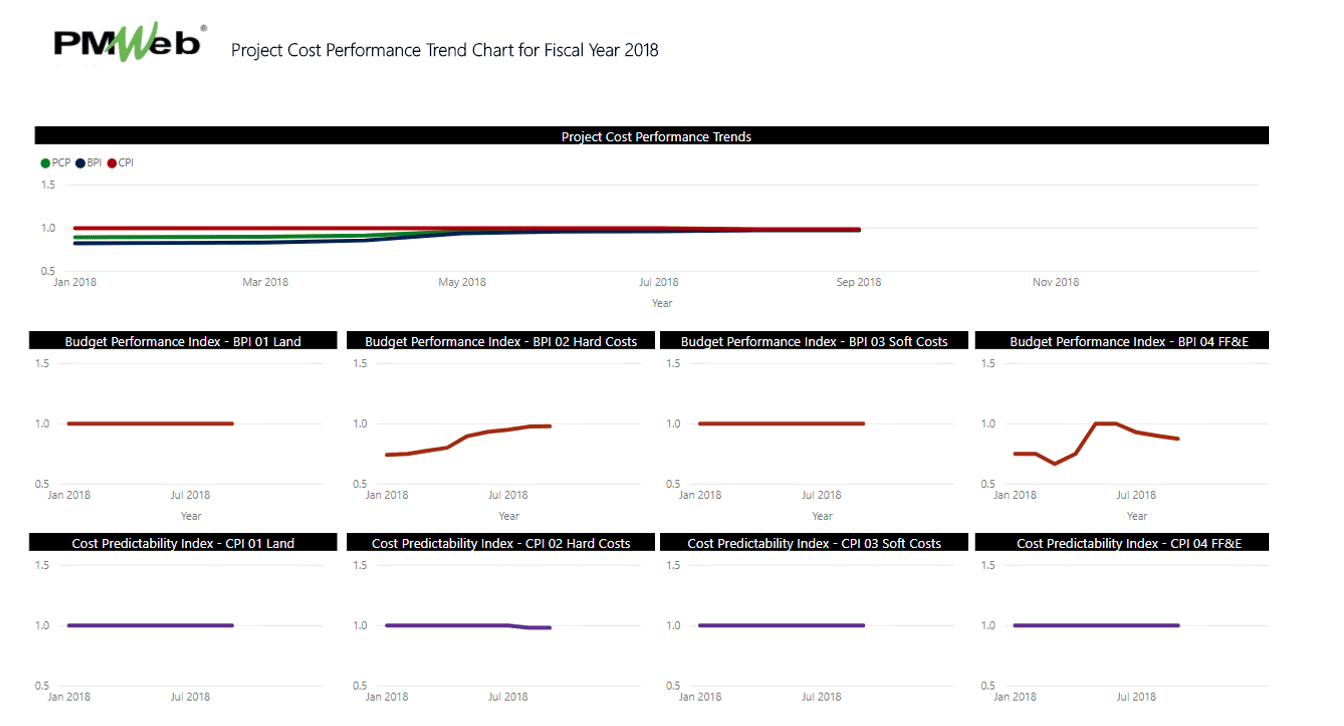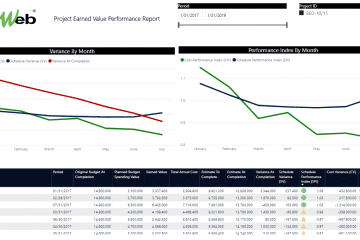For capital projects owners, there are two key performance indices that are widely used when it comes to reporting the cost performance of a project. Those are the budget performance index and the cost predictability index. Project owners need to monitor, evaluate and report the status of those indices among others to ensure that their projects are on track to realize the benefits that those projects will bring to achieve the organization’s strategic objectives.
Budget Performance Index (BPI)
The budget performance index is the ratio of the actual cost incurred to date through contracts’ progress and other miscellaneous invoices, or the actual cost (AC) against to the total allocated planned project budget value for the same period, or the planned value (PV).
This budget performance index measures the project management team ability to meet the forecasted expenditures for the fiscal year, or the elapsed period of that fiscal year. For most organizations, failing to spend the approved budget for the fiscal year means that other projects within the organization were deprived from using those funds which were blocked for the approved projects. The favorable budget performance index will be 1.00. Having a value of less than 1.00 means that the project is failing to spend the allocated project budget for which if it drops below 0.95 (5% less than the approved budget spending), then this would be of great waste of allocated budget. On the other hand, a value that is more than 1.00 indicates that the project actual spending is exceeding the approved budget which means the project could encounter issues in making payments due for completed works should it exceed 1.05 (or 5% over the approved budget spending plan).
Cost Predictability Index (CPI)
The cost predictability index is the ratio of the approved original budget at completion versus the estimated project’s forecast at completion. The estimated project’s forecast at completion (EAC) includes the actual cost to date plus the cost of remaining scope of work, approved change orders, and an estimated forecast for pending change orders and claims. For lump sum contracts and from a project owner perspective, the approved original budget is based on the awarded contracts value, all approved change orders plus usually a 10% provision for contingency and scope creep (BAC).
The cost predictability index measures the project management team ability to maintain the estimated project cost at completion to what was originally approved and budgeted for. The favorable cost predictability index will be 1.00. Having a value of less than 1.00 means that the project is forecasted to exceed the approved budget. On the other hand, a value that is more than 1.00 indicates that the project’s forecast cost at completion will be less than what was budgeted for.
Project Cost Performance (PCP)
The combination of the budget performance index (BPI) and cost predictability index (CPI) will provide an objective indicator of the overall project cost performance. Although it should be noted that might not be equally important. For example, the organization might decide that 60% of the project cost performance depends on the budget performance index (BPI) while the balance 40% depend on the cost predictability index (CPI). This also gives the flexibility to add other cost related key performance indicators to calculate the project cost performance (PCP) for which each could have different weight value but the total of all should be 100%.
Why a PMIS is Needed to Monitor, Evaluate and Report the Status of Performance Indices?
Using a Project Management Information System (PMIS) like PMWeb provides the organization with the platform to automatically calculate the budget performance index (BPI), cost predictability index (CPI) and project cost performance (PCP) among many other performance indices. Using PMWeb project management processes will automate the capturing of relevant data in the right format, at the right time by the right project team members. PMWeb will help to ensure that all originated projects’ data are robust, reliable, relevant, auditable, appropriate, attributable, traceable, transparent and trustworthy.
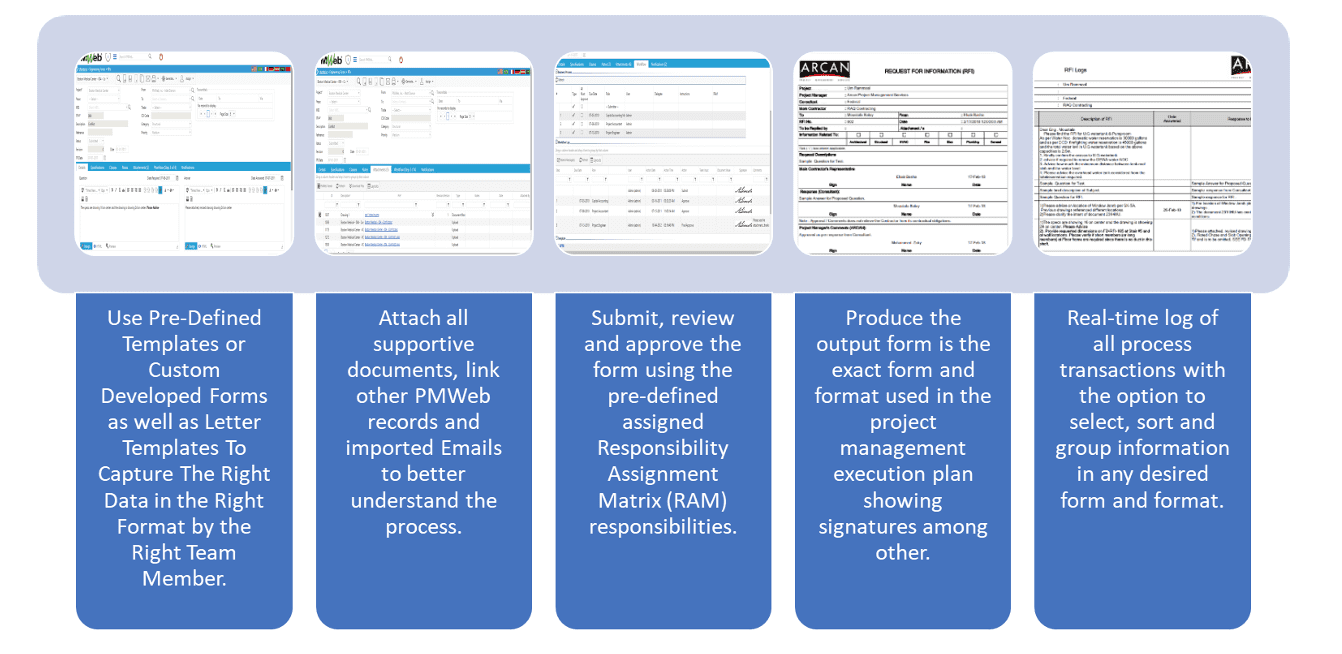
This will become the basis to have real-time single version of the truth of the organization’s project’s portfolio performance with the option to drilldown to the data origin This will enable the organization to monitor, evaluate and report the status of the budget performance index (BPI), cost predictability index (CPI) and project cost performance (PCP) among many other performance indices across their complete projects’ portfolio.

Determining the Cost Control Levels
The organization must first determine the cost centers that the budget performance index (BPI) and Cost Predictability Index (CPI) needs to be managed, monitored, evaluated and reported on. This will be achieved by defining the project’s cost breakdown structure levels which is usually the same for all projects managed by the organization. PMWeb cost breakdown structure (CBS) will be used to map those levels as per the organization requirements. For project owners, the cost breakdown structure (CBS) could include cost centers for advance payment, retention release, other expenses for permits and authorities approvals, contingency and management reserve.
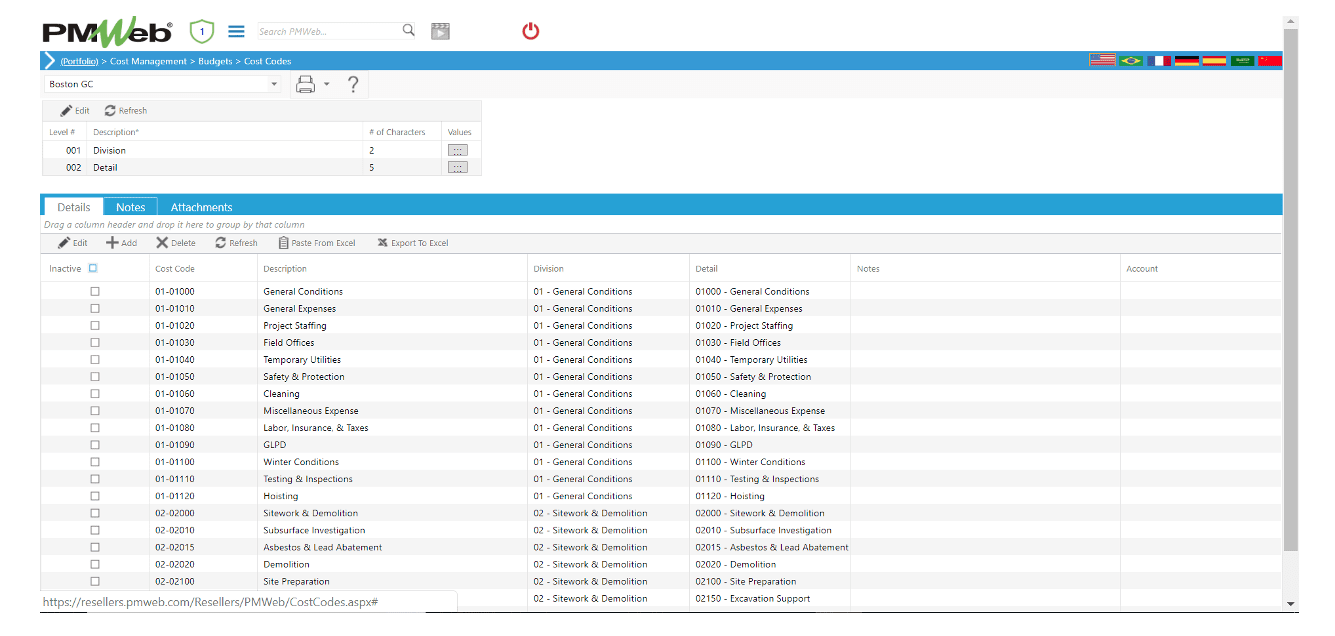
Capture the Project Schedule
Integrating the project cost with the project delivery schedule is a must to monitor, evaluate and report the status of the budget performance index (BPI) for calculating the planned budget spending value. For construction projects, the project schedule is usually developed using Oracle Primavera P6 while some might select MS Project. Using PMWeb scheduling module, the project’s baseline and all subsequent schedule updates will be imported into PMWeb.
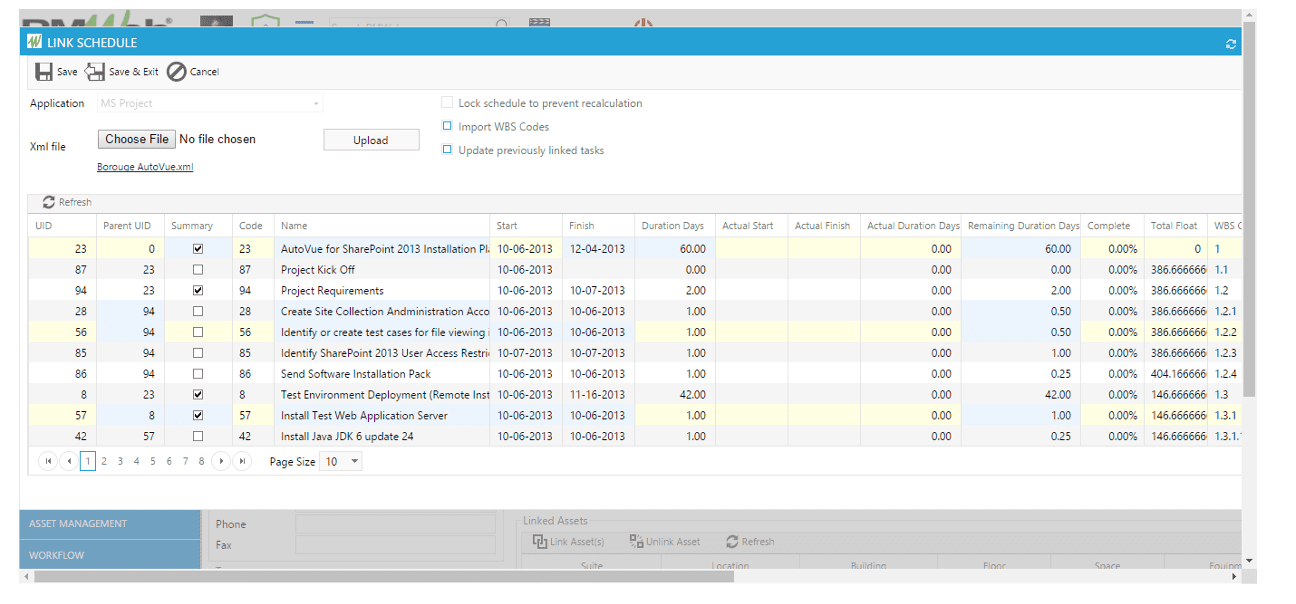
Capturing the Approved Project Cost Estimate
The source of each project budget is the approved cost estimate which could be developed at the different project life cycle stages including feasibility, concept, schematic, deign development, issued for construction and definite cost estimate. The definite cost estimate is the cost of the awarded contracts to the project’s contractor(s). The cost estimate needs to be grouped by the cost breakdown structure (CBS) as identified above and linked to the relevant project activity that includes the scope of work associated with the cost estimate. Usually this analysis will be done using MS Excel to enable transforming the cost captured at the bill of quantity line items into the required format needed to manage the project budget.
PMWeb cost estimate module will be used to capture the project cost estimate grouped by the project cost centers. The cost estimate import function will import the cost estimate into PMWeb which will be reviewed and analyzed before it gets approved. A workflow can be assigned should there be a requirement to formally submit, review and approve the cost estimate. In addition, it is recommended to attach copy of the original bill of quantity (BoQ) and the MS Excel file used to map the BoQ to the cost estimate.
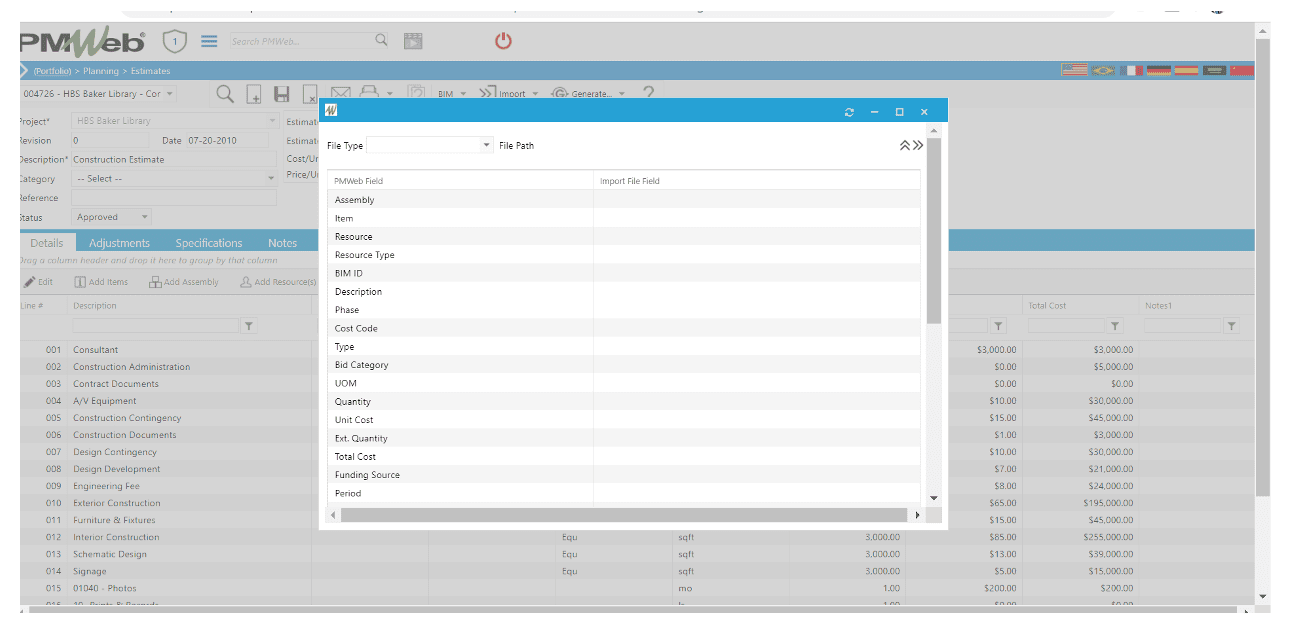
Establishing the Project Budget Performance Plan
Using PMWeb, the project budget will be generated from the approved cost estimate. For each budget line item, the allocated fund will be spread over the periods that the project budget is planned to be spent on. Although PMWeb provides predefined projection curves such as front loaded, back loaded, bell shaped and linear, the cost manager has the option to spread the budget funds for each cost breakdown structure (CBS) level in any desired distribution format. A workflow can be assigned to the budget to formalize the approval of the project’s original budget also known as budget at completion (BAC) and the planned value spending plan also known as planned value (PV) or budget cost of work scheduled (BCWS). This will be the basis for establishing the approved budget planned for the current and future fiscal years.
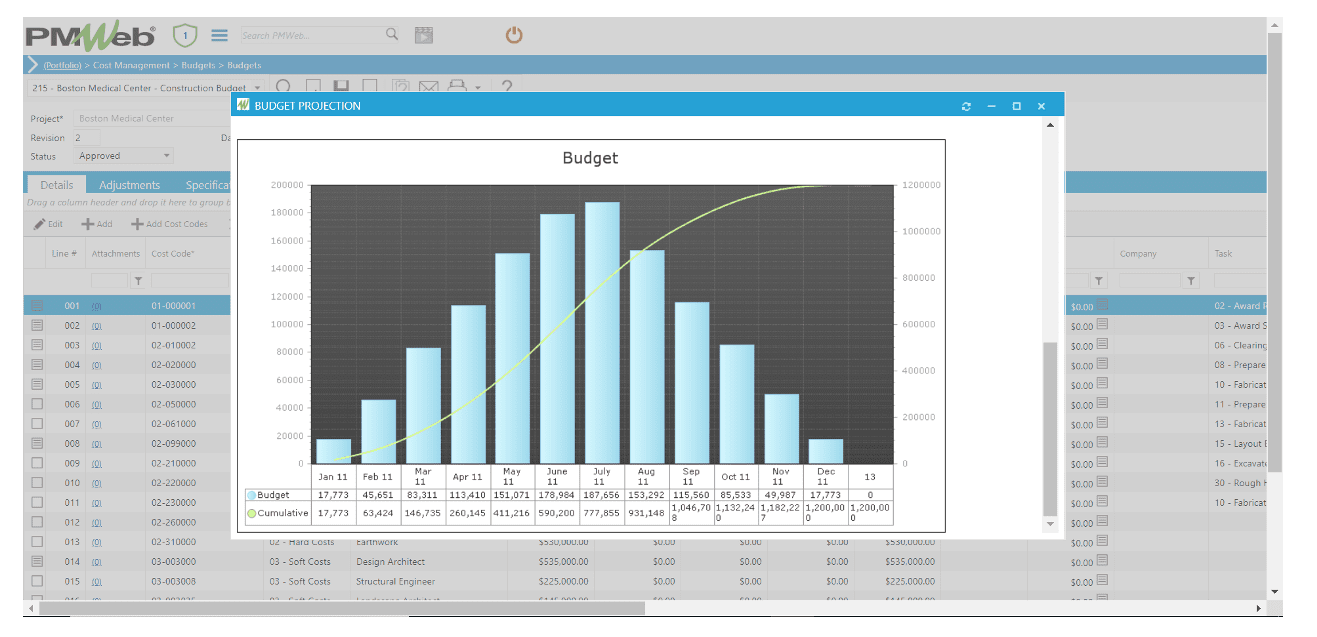
Capturing Budget Changes
To ensure that the project’s performance budget reflects all adjustments and changes approved by the project owner, the approved project budget plan could be subject to budget transfers were funds are moved from one center to another while keeping the total budget at completion (BAC) intact. In addition, there could be budget adjustments which could result in increasing or decreasing the budget at completion (BAC) due to approved change orders or any other approved adjustments. All budget adjustments to should be distributed against the project periods that they will impact. PMWeb budget request module will be used to manage all budget transfers and adjustments. A workflow can be assigned to formalize all budget adjustments.
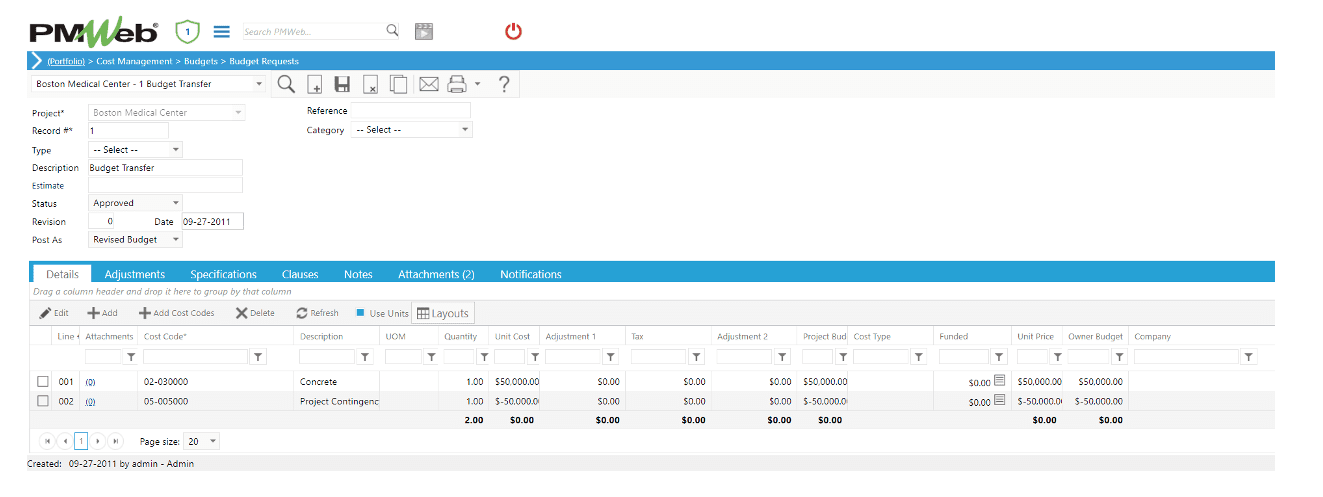
Capturing the Actual Budget Spent
The actual budget spent is the actual cost captured using progress invoices for the awarded contracts, miscellaneous invoices for other expenses like permits and authorities’ fees, and timesheets for the project owner’s own staff. Regardless of the document used to capture the actual cost for a specific project period, the actual cost needs to be associated with the relevant cost breakdown structure (CBS) level. The actual cost (AC) is also known as the actual cost of work performed (ACWP).
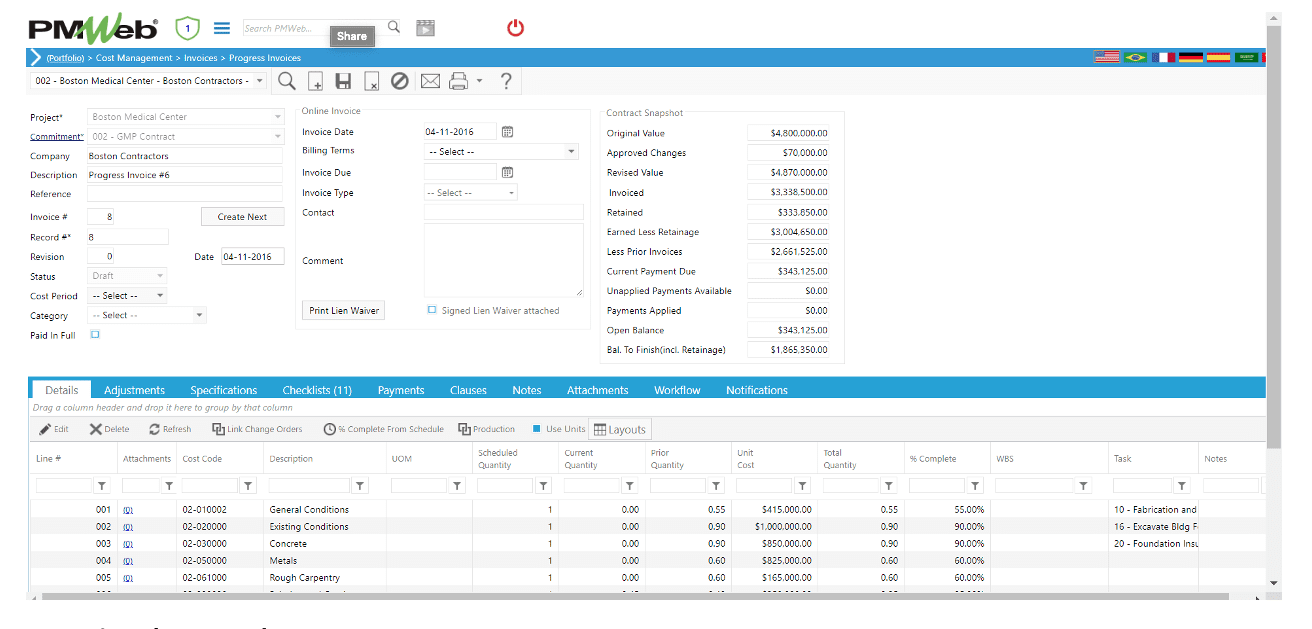
Capturing Change Orders
For all awarded contracts, PMWeb change order module will be used to capture the details of all change orders approved by the project owner. For all approved change orders, the budget request module detailed above will be used to adjust the project budget to reflect the impact of those changes on the project budget at completion.
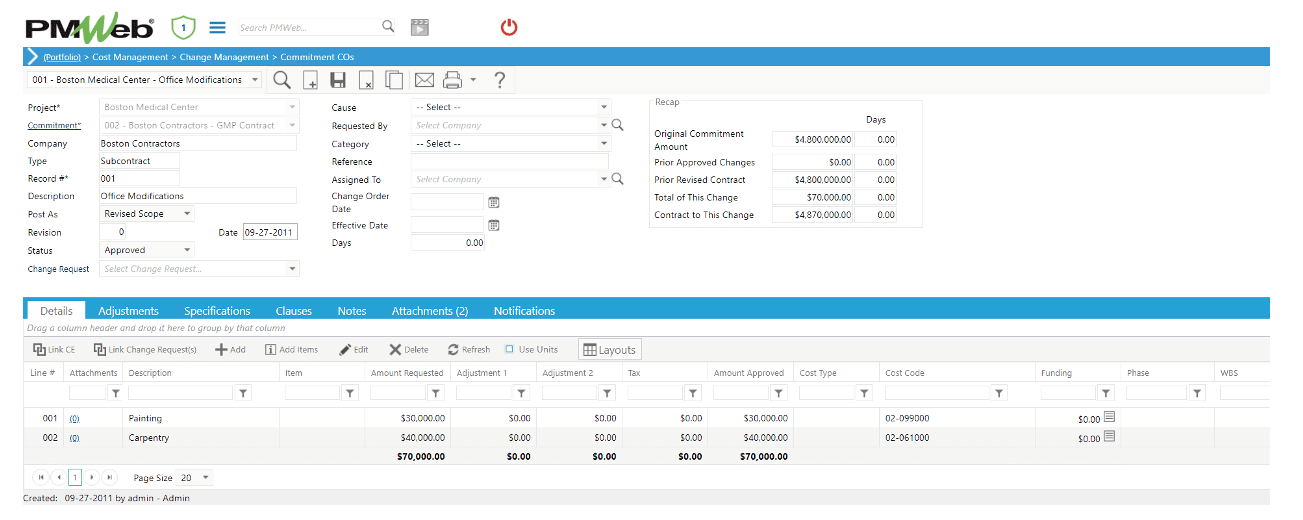
PMWeb also provides the option to capture the details of all possible change orders and claims made by the contractor using PMWeb potential change order module. The cost impact of those changes that yet to be approved or rejected, will be grouped under the forecast to complete heading on any other heading that might be selected by the project owner.
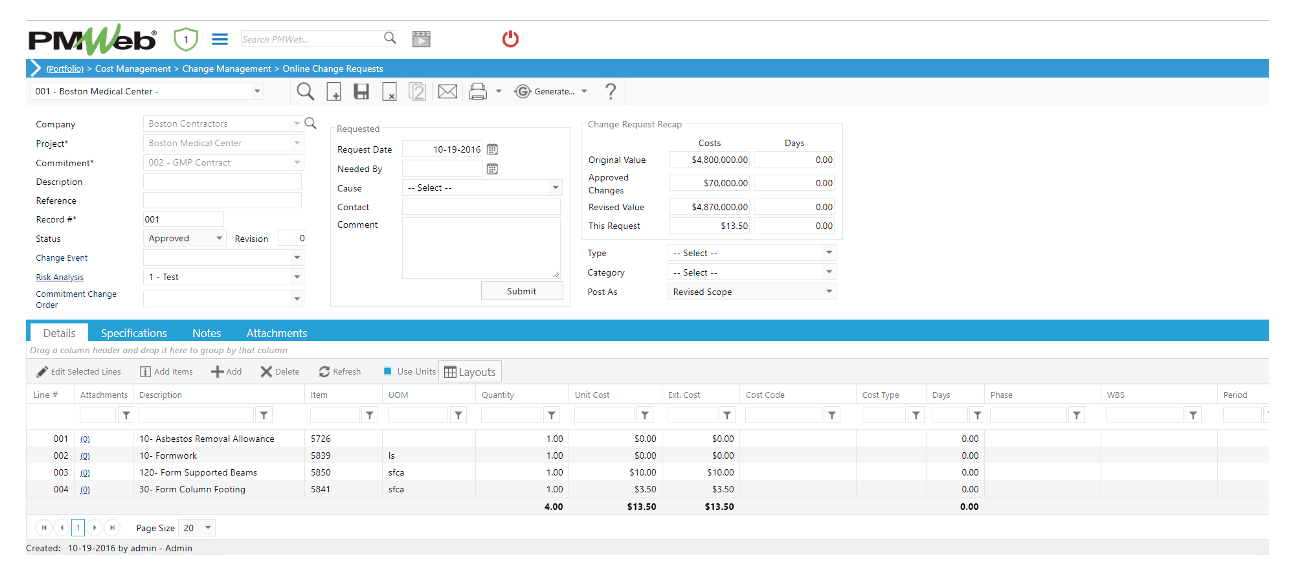
Reporting the BPI, CPI and PCP
At the end of each progress period, the project cost performance status report will be used to calculate and report the budget performance index (BPI), cost predictability index (CPI) and project cost performance (PCP). For each cost center, the report will detail the budget at completion (BAC), budget adjustments, revised budget, planned budget spending value as of the current period (PV), actual cost for the same period (AC), balance to complete or estimate to complete (ETC), forecast to complete for all potential change orders and claims and forecast at completion or estimate at completion (EAC). The budget performance index (BPI) will be calculated by dividing the actual cost (AC) by the planned value (PV) whereas the cost predictability index (CPI) will be the revised budget at completion (BAC) divided by the estimate at completion (EAC).
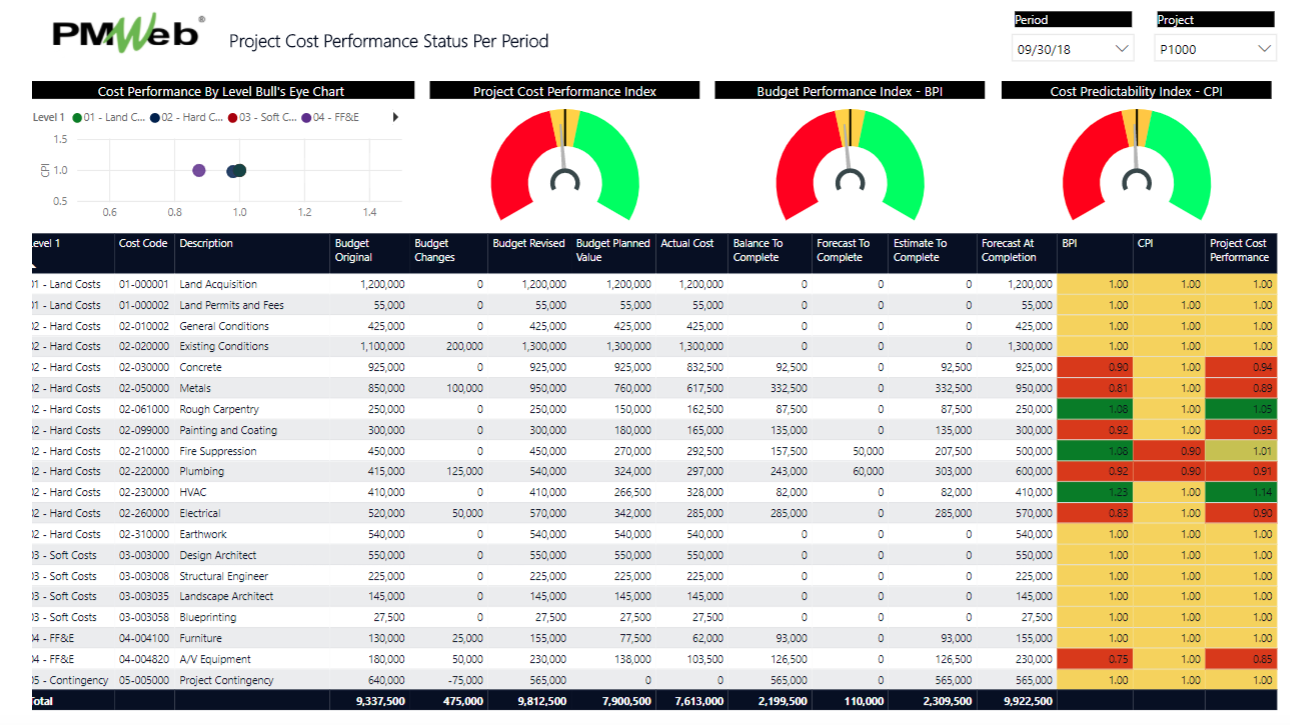
The organization can also report the performance trend for those indices during the project fiscal year, assume 2018. The report will display the trend chart for the three indices at project level and the budget performance index (BPI) and cost predictability index (CPI) for level of the cost breakdown structure which include land cost, hard costs, soft costs and FF&E costs for the shown example.
